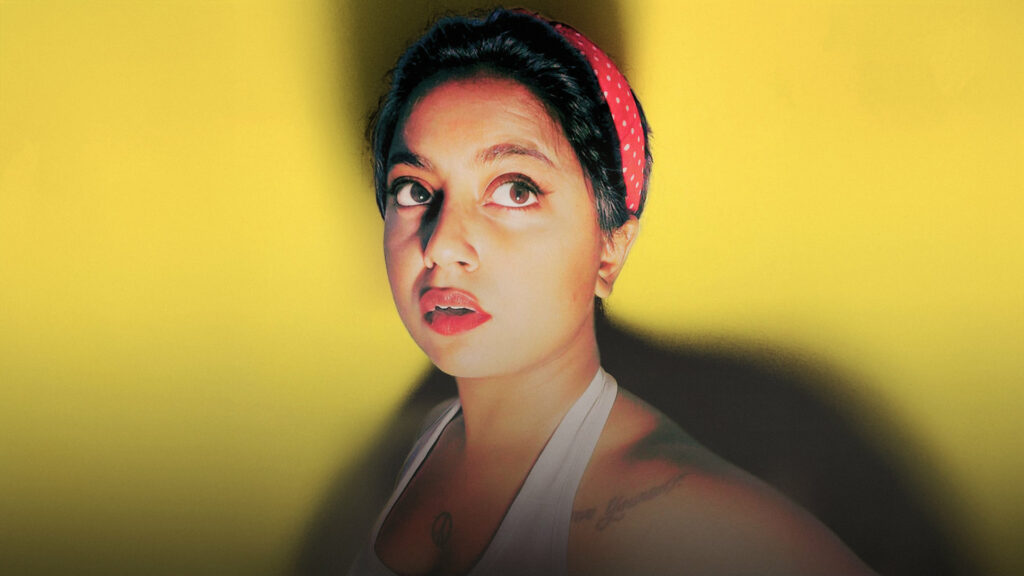Protest and partying intertwine deeply in Britain’s techno music scene, drawing persistent interest from the police. Ever since the boom of underground rave parties in the ‘80s, politicians and law enforcement have been trying to take the free party movement under control. Noise, drug use, and the secretive nature of underground parties sparked concern and fear among authorities. Decades later, little has changed — except that the police are now armed with technology, like drones and facial recognition, to monitor and halt raves.
What emerged as small acid house parties in late ‘80s London grew into a movement where young people sought escape from Britain’s grim socioeconomic reality. Underground parties were alluring in their illegal nature, with drugs, lights, and intense sound systems becoming staples. This, however, prompted moral panic and heavier policing, which fuelled the popularity of this movement.
In the ‘90s, the UK government passed the Entertainment Act, imposing fines of up to £20,000 for hosting illegal raves. Organisations kept party venues secret to evade this, and the movement became more elusive. Thousands of people flocked to open venues like the iconic Castlemorton Commons Festival — leaving the police utterly powerless. Paradoxically, the police and media attracted a higher attendance to Castlemorton by strongly urging people not to go, showing that fearmongering only made raves more popular.
The 2000s witnessed a slight ease of restrictions, which partially allowed rave culture to integrate into legal mainstream partying. Because of this, raves were forced into nightclubs and private music venues, with entry fees and overpriced alcohol. However, policing did not stop there, and over the years, clubs across the country have been shut down and bashed whenever something illegal occurred, using this to justify further restrictions. Inevitably, ravers took partying elsewhere, refusing privatisation and commoditisation of their culture. During and after the pandemic, more raves have shifted outdoors and started to resemble large illicit events of the past.
Drones and surveillance
Today, police are equipped with different gadgets that help detect, monitor, and deter public gatherings. This year’s UK Tek free rave attracted 3000 people to South Dorset and gathered significant attention from local police. Drones were used to record surveillance footage, which is often processed through face and number plate recognition software. There is no way of knowing how this was used, but it can imply that authorities gather information to compile a database of individuals under scrutiny. Police also monitor social media to identify potential rave venues — and place mobile CCTV units next to suspected venues to deter ravers. The official stance remains that all unsolicited raves are “inherently unsafe”, which justifies unethical measures to prevent and shut them down.
Essentially, this lets the police monitor and collect data about events and their attendants without any repercussions — even though it infringes on rights to civil liberties and freedom of association. Unsurprisingly, the majority of the British public approves of drone and surveillance technology use, while citizens are strongly urged to report potential gatherings. It is clear that raves can and will be policed under the pretence of fearmongering.
How raves adapt
Despite all efforts, rave culture continues to thrive like never before. The pandemic has shown how truly unstoppable the rave movement is and why it is so closely tied to fighting for civil liberties. The free party movement surged in 2020 despite strict social distancing and self-isolation policies. Rave communities adapt by using encrypted communication channels, decentralising event planning, and changing venues spontaneously. Because of social media surveillance, event locations are often shared through word of mouth or messengers, making parties difficult to trace.
The community continues to challenge the commercialisation of partying by hosting pop-up gatherings in remote country locations, like fields, forests, and abandoned warehouses. Organisers have also started to use equipment that can be assembled and disassembled quickly, making parties more mobile. “When communities are united, they are stronger, and they can’t be pushed around”, emphasised Sophie Duniam from underground electro duo My Bad Sister when she spoke about the resilience of the free party movement.
Apart from spiritual meaning, raves are often described as a political movement. It is a space that gives freedom to identity expression, and hence always centred around the idea of advocating for individual rights. Within the movement, causes like Black Lives Matter and LGBTQ+ rights are supported and promoted. Inclusivity, union and social change are the very core principles of the free-party movement, giving it resilience to withstand pressure.
The future
The UK’s rave culture is not going anywhere, even with future advancements in surveillance technology that will come with AI-powered analytics and robust drones. Over its 40-year history, the rave community has shown remarkable resistance to government control, even when public health was at stake. As technology develops, the rave community will likely create new ways to bypass invasive control and continue to defend its right to party, even when Big Brother is watching.
Cover photo: My Bad Sister via Facebook



